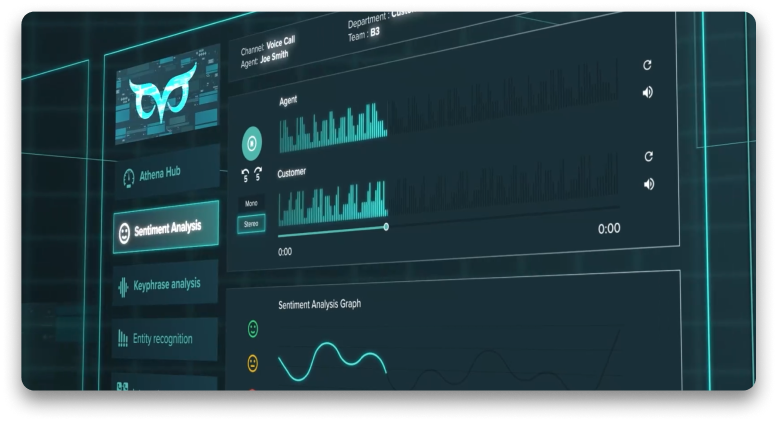Omnichannel Pharma
The pharmaceutical industry has experienced a rapid evolution over the last few years. One of the prime examples of how pharmaceutical companies are changing the way they do business with physicians and prescribers is the increasingly widespread adoption of Omnichannel approaches to Customer Experience. But what exactly is Omnichannel Pharma and why is it so important?
In this article, we’ll explain everything you need to know about Omnichannel Pharma, why Omnichannel Customer Experience is now more important than ever for pharmaceutical companies, and what are the best ways to go about implementing Omnichannel for a pharmaceutical company.
The importance of Customer Experience in Pharma
Over the last few years, the pharmaceutical landscape has encountered a number of unprecedented circumstances that have resulted in drastic changes in how pharma companies do business.
The offer and variety of new prescription drugs for different conditions has done nothing but increase exponentially over the last years, with medical research advancing in leaps and bounds. This not only means more patients to serve, but also a much more competitive landscape.
Also, Covid-19 made pharmaceutical companies realise the potential risks of relying too heavily on face-to-face visits, as well as the inherent limitations of that model in terms of promoting disease awareness or securing value for all stakeholders.
In addition, pharmaceutical companies are also realising the importance of placing the patient at the centre of their decisions. Patient-focused approaches have been gaining traction as they prove to be sources of value in terms of increasing employee engagement , patient trust, revenues, HCP trust, and stakeholder engagement. “Patient focus is inextricably linked to profitability in the longer term,” says Ramona Sequeira, President of Takeda Pharmaceuticals, in the report Patient-Centric Profitability: Pharma’s Global Survey & Analysis, by Aurora Project. “Many believe these two (patient focus and profitability) are at odds with each other, but I don’t see it that way. Helping as many patients as possible, while limiting spending to those activities that will help patients, leads to greater profitability,” adds Christi Shaw, former U.S. Country Head and President of Novartis Pharmaceuticals Corporation.
In 2023, it’s in pharmaceutical companies’ best interest to not limit themselves to researching and launching a product that’s clinically effective, safe, superior to alternatives, and easy to use: they must also map the customer journey from start to finish for both prescribers and patients.

As we have explored in our other pieces about Customer Experience, the variety of available options for researching and shopping encourages customers to be more selective and demanding with the experiences provided by brands, to the extent that these sometimes matter even more than the product itself.
An Omnichannel approach to customer engagement is one of the most important parts of a personalised, seamless, quality Customer Experience. In our article about Omnichannel, you can read more about Omnichannel’s tight relationship to optimal Customer Experience and about how it can help create seamless, cohesive, memorable brand experiences across different industries.
We have defined Omnichannel like this:
“First and foremost, Omnichannel is a method for improving Customer Experience. In a nutshell, its purpose is to provide customers with a unified, cohesive brand experience regardless of how they engage with or interact with the brand. (…)
The ideal Omnichannel Customer Experience will encompass all experiences taking place across channels and coordinate them with each other (…), giving a personalised experience to every customer, all while retaining and conveying a cohesive, unified brand experience.”
In this article, we’ll focus on the pharmaceutical industry, one of the many fields where Omnichannel is becoming an essential for customer engagement. But what does Omnichannel mean for the pharmaceutical industry? What form will an Omnichannel Pharma approach take? What does Omnichannel Pharma look like in the field? We’ll address those questions in the following lines.
What does Omnichannel Pharma look like?
The adoption of an Omnichannel approach by pharmaceutical companies means, essentially, the integration of all communication channels to create seamless, high-value customer experiences that occur within and between contact channels with patients and physicians. This empowers companies to reach more customers, provide a better brand experience, and increase sales, customer loyalty, and revenue.
Before we get into the specifics of how pharma companies can leverage Omnichannel to achieve those results, it would be convenient to get reminded of something you may not know if you’re new to Omnichannel: the difference between a Multichannel and an Omnichannel approach.
Omnichannel vs. Multichannel
Unfortunately, the difference between Omnichannel and Multichannel is not often clear enough. This confusion can lead business owners and managers to overestimate the quality and capacity of their customer engagement strategies, which can result in the loss of valuable resources, time, money, and customers.
Let’s try to clear things up a bit. Multichannel communication involves adding various communication channels for customers to contact a business, but it doesn’t make it any easier for agents or customers to switch between them. As a result, interactions can become lengthier, awkward, and less effective.
Omnichannel, on the other hand, integrates all communication channels into one cohesive platform, making it seamless and smooth for both agents and customers to communicate. This way, everyone benefits from a more efficient and user-friendly experience.
Omnichannel Pharma Benefits
There are multiple ways in which Pharmaceutical companies can benefit from Omnichannel:
- Better data collection and analysis. With a comprehensive omnichannel software platform, marketers can access multiple data sets throughout the treatment cycle, enabling them to gather precise information. Consequently, this empowers them to connect with physicians at the opportune moment and offer the most suitable products for their patients.
- More effective sales force. Real-time data equips sales representatives with the ability to reach out to physicians treating eligible patients for a brand’s prescription drugs. Omnichannel allows companies to allocate their budget wisely, avoiding fruitless calls and focusing on the right physicians, taking into account, for instance, which physicians prefer virtual interactions over in-person meetings, or what virtual channels they prefer.
- Highly personalised customer journeys. By integrating various communication channels, such as social media, email, websites, mobile apps, and virtual consultations, pharmaceutical companies can gather valuable data about their customers’ behaviours, interests, and medical history, which enables them to build different customer journeys and tailored experiences for different types of clients. These can enhance engagement, build trust, and ultimately improve patient outcomes.
- Holistic, memorable brand experiences, leading to improved customer loyalty. An omnichannel platform provides marketers with a unified dashboard, integrating all programs, channels, and campaigns effortlessly. This enables them to establish a unified and consistent brand identity along the physician’s buying journey, guaranteeing active engagement of physicians with the brand’s content, ensuring they recall the value proposition and convey it to patients.
Omnichannel Pharma Best Practices
More Focus on Virtual Care and Medicine
Pharma companies learned a hard lesson from COVID-19: virtual communication is a must, and they should connect with everyone across various channels. As a result, their main focus should be on discovering innovative ways to engage with stakeholders effectively and make sure virtual care and medicine are accessible to healthcare professionals, physicians, and patients, with a little less focus on face-to-face interactions. Omnichannel pharma represents a leap beyond the limitations of traditional customer engagement by enabling unlimited options for virtual care adapted to individual preferences.
Optimisation and Integration Across Channels
With the vast range of communication channels available and variety of customers’ preferences today, pharma companies can no longer afford to stick to just one or a few channels. Things have changed as customers now have multiple touchpoints to choose from, and the industry can’t overlook this fact. In this context, Omnichannel pharma campaigns represent a massive leverage to fine-tune messaging across all channels and audiences, ensuring memorable customer experiences are delivered.
Personalisation
In multichannel marketing, personalising customer messages is not an option. Due to the lack of synchronisation between channels, maintaining a consistent flow of messaging across them was always challenging. On the contrary, omnichannel pharma marketing enables precise targeting of customers based on their unique needs. This approach effortlessly caters to customers throughout their journey with a brand, fulfilling their exact requirements.
Performance Measurement
Pharma companies had a tough time keeping tabs on marketing metrics and performance with old-school methods. But everything’s changed with the emergence of technologies like Artificial Intelligence. Now, many Omnichannel pharma solutions allow businesses to effortlessly measure impact across various channels and touchpoints. Dynamic analytics on each customer empower smarter marketing campaigns and unlock valuable customer insights.
Data-driven Decisions
Having access to essential customer data across touchpoints is a significant advantage of omnichannel pharma solutions. When data is readily available, making informed decisions becomes seamless. As a result, a pharma company can gain a deeper understanding of which audience profiles to target, where to allocate more resources, and other strategic insights. This comprehensive understanding allows for better allocation of metrics and resources, leading to improved marketing ROI that aligns with desired outcomes.
If you enjoyed reading this, you might also be interested in…
Omnichannel Customer Experience
Omnichannel Contact Centre
Improving customer loyalty and brand reputation through Omnichannel
4 customer service agent frustrations that omnichannel can solve




